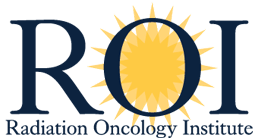Todd McNutt, PhD
Increasing Quality Through Better Predictive Modeling
Todd McNutt, PhD, and his team at Johns Hopkins University have been building the Oncospace database and website since 2007 to collect a large and ever-growing amount of clinical, treatment, imaging, toxicity, oncologic and patient-reported data. The system has been designed so that every radiation oncology patient can be treated as if they are in a clinical trial by collecting the data as part of the normal work flow.
With his ROI grant, Dr. McNutt used the data from the head and neck cancer patients in Oncospace to build machine learning models that make personalized, evidence-based predictions of treatment toxicities related to weight loss. Together, Dr. McNutt, radiation oncologist Harry Quon, MD, who specializes in treating head and neck cancers, and others on the Oncospace team worked to:
- Better understand how the spatial distribution of the radiation dose influences toxicities.
- Improve current toxicity prediction models by accounting for image-based features of a given structure’s anatomy and more complex spatially dependent features of the dose distribution based on dose gradient, symmetry and analysis of which regions of the structure have the most influence on function.
- Begin the development a decision support tool that will assist with treatment planning and clinical interventions based on these predictions.
Oncospace is designed to support a learning health system in which patient outcomes improve over time - the data from each patient entered in the system, including his or her outcomes, becomes part of the knowledge base that the next patient’s predictions are based on.
Six institutions currently participate in the Oncospace consortium, and there is room for it to grow. The bigger the dataset, the better the predictive models will become. The ultimate goal is to be able to make these types of tools available to any physician through an Oncospace web portal. An Oncospace start-up company was launched in 2019 by John Hopkins Technology Ventures (JHTV), and it has been awarded Small Business Innovation Research (SBIR) grants from the National Cancer Institute and National Science Foundation totaling $1.75 million. Learn more about Oncospace.
Publications
- Exploring the Relationship of Radiation Dose Exposed to the Length of Esophagus and Weight Loss in Patients with Lung Cancer was published March 19, 2020 in Practical Radiation Oncology.
- Spatial Radiation Dose Influence on Xerostomia Recovery and Its Comparison to Acute Incidence in Patients With Head and Neck Cancer was published in the March 2020 issue of Advances in Radiation Oncology.
- Predicting Acute Radiation Induced Xerostomia in Head and Neck Cancer using MR and CT Radiomics of Parotid and Submandibular Glands was published in July 2019 in Radiation Oncology.
- Machine Learning Methods Uncover Radio-Morphologic Dose Patterns in Salivary Glands that Predict Xerostomia in Head and Neck Cancer Patients was published in the April - June 2019 issue of Advances in Radiation Oncology.
- Dose/Volume Histogram Patterns in Salivary Gland Subvolumes Influence Xerostomia Injury and Recovery was published in March 2019 in Nature: Scientific Reports.
- Radio-morphology: Parametric Shape-Based Features in Radiotherapy was published in the February 2019 issue of Medical Physics.
Presentations
- Exploring the Relationship of Radiation Dose Exposed to the Length of Esophagus and Weight Loss in Patients with Lung Cancer was presented at the 2019 ASTRO Annual Meeting.
- Voxel Dose Pattern for Patient-Reported Dysphagia Among Head and Neck Cancer Patients Receiving Definitive Radiotherapy was presented at the 2019 ASTRO Annual Meeting.
- Relationship of CT Radiomics and Dose Texture to Radiation-Induced Swallow Dysfunction in Head and Neck Cancer was presented at the 2019 ASTRO Annual Meeting.
- Predicting Xerostomia Using Diffusion Weighted Imaging in Head and Neck Cancer was presented at the 2019 ASTRO Annual Meeting.
- A Feasibility Study of Xerostomia Outcome-Based Treatment Planning to Improve the Probability of Xerostomia Recovery in Head and Neck Cancer Patients was presented at the 2019 ASTRO Annual Meeting.
- An Outcome-Based Treatment Planning Strategy to Improve Xerostomia Symptom in Head and Neck Cancer Patients was presented at the 2019 AAPM Annual Meeting.
- Understanding the Influence of Spatial Radiation Dose Patterns on Xerostomia: What They Might Be Telling Us was presented at the 2019 International Conference on Computers in Radiotherapy.
- The Feasibility of Outcome-based Treatment Planning Strategy to Improve Xerostomia Symptom in Head and Neck Cancer Patients was presented at the 2019 International Conference on Computers in Radiotherapy.
- Voxel Dose Pattern for Dysphagia Among Head and Neck Cancer Patients Receiving Definitive Radiotherapy was presented at the 2019 International Conference on Computers in Radiotherapy.
- Radio‐Morphology: Parametric Shape‐Based Features for Outcome Prediction in Radiation Therapy was presented at the 2018 ASTRO Annual Meeting.
- Machine Learning Methods Uncover Radio‐Morphologic Dose Patterns in Salivary Glands That Predict Xerostomia in Head and Neck Cancer Patients was presented at the 2018 ASTRO Annual Meeting.
- Dose‐Volume Histogram (DVH) Patterns within the Salivary Glands and Clinical Parameters Predict Xerostomia in Head and Neck Cancer (HNC) Patients, from Injury to Recovery was presented at the 2018 ASTRO Annual Meeting.
- Dosimetric Risk Factors for Patient‐Reported Dysphagia Among Head and Neck Cancer Patients Receiving Definitive Radiotherapy was presented at the 2018 ASTRO Annual Meeting.
- Radio-Morphology: Parametric Shape-Based Features for Outcome Prediction in Radiotherapy was an oral presentation at the 2018 AAPM Annual Meeting.
- Head and Neck Salivary Gland Spatial Dose-Volume Histogram (DVH) Patterns Predict Radiation-Induced Xerostomia, From Injury to Recovery was an oral presentation at the 2018 AAPM Annual Meeting.
- CT/MRI-Based Radiomics Analysis to Predict Radiation Induced Xerostomia in Head and Neck Cancer Radiotherapy was an oral presentation at the 2018 AAPM Annual Meeting.
- A Shape-Based Dose Model for the Prediction of High Grade Radiation Induced Xerostomia for Head and Neck Cancer Patients was presented at the 2017 ASTRO Annual Meeting.














